sailing in japan
- introduction
- useful nautical words
- entry procedures
- what to send
- arrival in port
- staying in japan for a while
- sailing at night
- contacting authorities
- trash and recycling
- restaurants
- agents
- electricity
- lpg
- water
- money
- language
- internet
- currents
- navigation
- fishing nets
- heavy traffic
- weather
- tides
- chandleries
- moorage options
- affordable marinas
- boatyards
- travel by land
- participate in a sailing rally
- leaving japan by boat
introduction
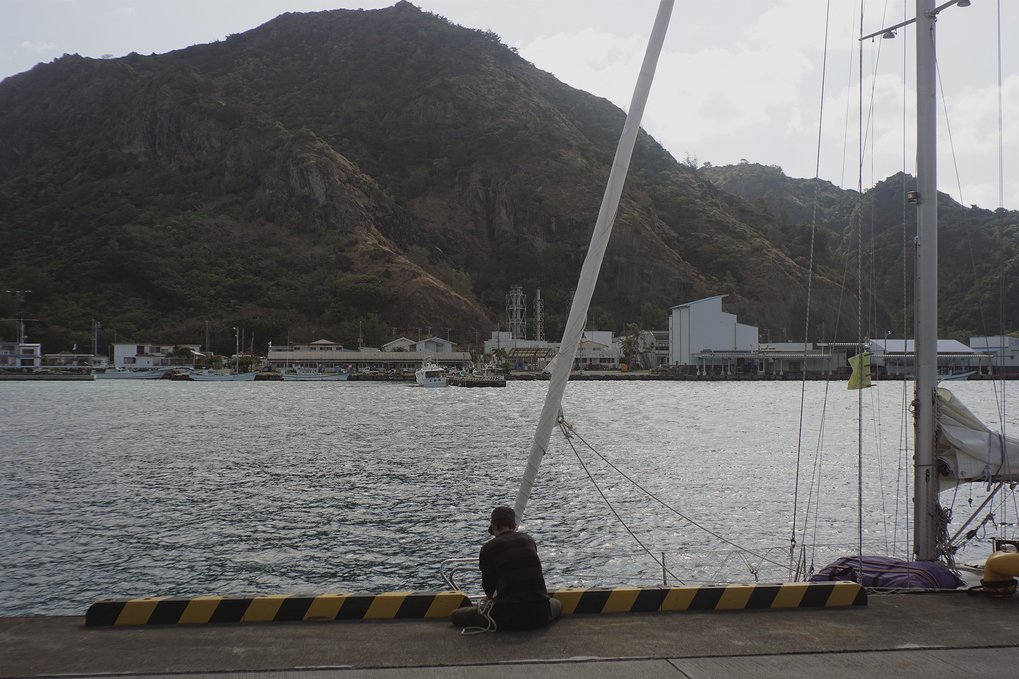
Sailing to Japan was our dream, there was no amount of labyrinthine bureaucracy that could have deterred us from pursuing our goal.
The entry procedures are intimidating, but not too difficult, all it requires is patience. From a bureaucratic point of view, sailing to Japan is easier than it used to be since the instauration of a cruising permit[PDF, 168 KB] in 2019. Here is a collection of notes on entry procedures, the papers required for entry as well as information on provisioning, ports and more...
Related pages
- Guides. Provisioning in Japan, Ogasawara Cruising Guide, & Plantbased Diet in Japan
- Blog entries. Shimoda, A Home for Pino, Hello Fujisan, Goji no Chaimu & Typhoons and Mold
- General. Japan & North Pacific Ocean.
useful nautical words
- ふね (fune) Boat
- ヨット(yotto) Sailboat
- 漁港 (gyokou) Fishing harbour
- ビジターバース (bijitaa baasu) Visitor berth
- 予約 (yoyaku) Reservation
- 港 (minato) Harbour
- 地図 (chizu) Map
- マリーナ (mariina) Marina
- 北 (kita) North
- 東 (higashi) East
- 西 (nishi) West
- 南 (minami) South
- 海 (umi) Ocean
entry procedures
Before you even think of entering Japan by sailboat, there are many preparations to make. You must first decide on your port of entry. In Japan, any open port is a port of entry and can be used to clear into the country. You can view a list of open ports here[PDF, 441.7 KB]. Open ports are big shipping ports, used by fishermen and cargo ships alike, with big concrete piers and bollards. The main ports of entry used by sailors, are:
- Naha (Okinawa) 26°12’34N 127°40’22E
- Kagoshima (Kyushu) 31°29.665'N 130°30.910'E
- Chichijima (Ogasawara) 27°5.921'N 142°12.013'E
- Osaka (Osaka Bay)
- Yokohama (Honshu)
It is possible to enter via a closed port but it requires applying in advance for a Closed Port Permit, see how to apply. If you want to check in to Naha, Kagoshima and Chichijima, applying for this is necessary. If you fail to obtain permission, they will fine you.
The Open and Closed port system is a remnant of the time when Japan was closed to the world. It used to be that as a sailor, you had to apply for every closed port you were planning on visiting, but since may 2018 it is only necessary to apply for a permit for your first port if it is a closed port.
what to send
- Closed port permission[.Docx, 17.5 KB] (if entering at closed port)
- Pre-arrival notice[PDF, 113 KB, 4 pages]
- Crew list
- Passport scans
- Boat papers (certificate of registry)
To the Coastguard
Once you've chosen your port of entry, you will need to find the email of the coastguard that has jurisdiction over that port.
- Naha (Okinawa) jcgbnahakq3-8f5m@mlit.go.jp
- Chichijima (Ogasawara) jcg3ogasawara-9q3p@mlit.go.jp
- Wakayama (Osaka Bay) jcg5wakayamakotsu2-7g2d@mlit.go.jp
- Shimoda, (Shizuoka) jcg3shimodakq1-9t8x@mlit.go.jp
Send these documents before leaving your last port. You should also send your preferred contact method, like your satellite phone number, or email. Later, when you are 24 hours away from your destination, send another message to update them on your date and time or arrival. It is okay to send them multiple messages if this information changes.
For more information, view the online guide on the Japanese CoastGuard website.
To the Prefecture Office
Like the Japanese Coastguard email, you need to find the email of the appointed prefectural representative that will process your closed port permit application. If you are entering in Ogasawara for example, it is part of the Kanto prefecture and so an email must be sent to the Kanto office.
Here is a list of the relevant offices and their emails. To find out how to fill the form, and for more detailed information visit the Ministry of Transport online guide.
These documents should be sent before you leave your last port. They will contact you if information is missing.
arrival in port
At this point, the coastguard should be aware of your arrival and will likely be waiting for you on the pier. It is possible to arrive at night, if this is the case, there will be someone to greet you and to make sure that you don't step on land until you are fully checked in. It's possible that the officials will be there present upon arrival and give you the documents to fill.
Customs, quarantine and immigration officials will come to see you. They will likely not speak English, but the forms often have both languages.
Quarantine
They will ask if you have any plants, meat or other fresh items on board. They might confiscate them, we had none aboard when they came and so they took nothing. We had many dried legumes and grains aboard, but they did not take them.
You can see a list of prohibited items here.
Customs
The officials will ask for the dates at which you visited your previous ports, and your upcoming destinations, they will ask for precise dates. Because making a long list of planned ports is no longer necessary, you only need to give them a general list.
You must request a 内国船舶 Naiko Senpaku or naikosen (domestic boat) registration on arrival. Because we arrived the year they created this permit, many of the officials were not aware of its existence, so insisting was necessary, it is possible that they give it outright to foreign boats, either way, make sure you leave their office with it. This paper changes the boat's domestic status. A naikosen will waive the requirement for you to do port entry/exit customs paperwork in both open and closed ports for as long as you are in Japan. See how to apply for a naikosen.
You must cancel the Naikosen (returning the boat to “foreign” status) with the customs official of the region before leaving Japan. You can get tax-free fuel this way.
Immigration
Officials will ask you to step off the boat, they may take you to an office in town to do the paperwork(this was true for Chichijima). You will have to complete a document, they may take a picture and scan your index fingers. They'll ask you to fill a few more papers, all of which have English writing.
Most travelers are allowed 3 months on a tourist visa, although you may be allowed more depending on your country of origin (U.K, Austria, Germany, Ireland, Switzerland, and Mexico nationals can stay 6 months, but must apply for an extension). Your boat can stay in Japan indefinitely.
staying in japan for a while
As a tourist, you can only stay as long as 3 months, which doesn't give you much time to explore Japan by boat. What options are there to stay longer?
In and Out of the country
You can only do this once, in any 6 month period so don't count on repeating it after that time. There is a ferry that runs from Fukuoka to Busan that is cheap, and that makes a good option for making a short exit.
Applying for an extension
If after 6 months, you can't leave for whatever reason, you can apply for an extension, but extensions are only ever granted in emergencies(boat in need of repairs, bad oceanic weather, etc). For example, we were granted an extension in May 2020 because of the covid-19 pandemic.
To find out more about the extension process, visit the website of the immigration bureau of Japan. The document to extend your stay on a tourist visa are found here.
The extension costs 4,000 yen, it must be paid with revenue stamps called shunyuinshi (しゅうにゅういんし or 収入印紙) in Japanese. Revenue stamps are available for purchase at the post office or at most convenience stores. It can take 2 weeks to a month to process an extension application.
Sail to South Korea
Busan is very close to Japan. If this is your plan, you can sail up the west coast of Japan and exit the country through Tsushima to make the sail to Korea. Canadians can stay in Korea for 6 months, but many other nationalities are granted only 90 days. Extensions are difficult to obtain. If you're planning on staying longer than 90 days, you must obtain a special long-term visa in advance and you will have to apply for a residence certificate at the local immigration office.
Busan isn't ideal to keep your boat for long periods of time, but there are plenty of other places to go. A friend mentioned Mokpo as being a good, cheap place to keep a boat for a long period, but it's a longer sail than Busan.
Leave the boat in Japan for 6 months
Your boat is allowed to stay, but you aren't, so one option is to leave your boat in a safe place in Japan for 6 months and to return home. Many cruisers do this (we did this, see our post about it), leaving the boat in the fall and returning to Japan in the spring.
sailing at night

Sailing in Japan is different from other places in the world, in the way that sailing at night is strongly discouraged, due to the presence of nets, floats, algae, and fish farms. When sailing through the inland sea, a watch at the bow is necessary, even in daytime, so this gives you an idea of what it may be like at night. A lot of fishermen don't have AIS, and are not always on watch at night either, so it's best to keep transit times short and during the daylight hours. If a longer passage is necessary, sailing offshore may help to avoid dangers. There is also offshore traffic to consider, especially near and around the Kii peninsula.
If you plan to sail extensively through Japan, chances are you'll be mooring in many small fishing harbours onto concrete piers. The walls may, or may not have big rubber bits, and some will have gaps that make it difficult to protect your boat using only fenders. In all cases, having a fenderboard is useful, it will keep your fenders from going into the gaps of the dock and will protect them from the rough concrete pier. The big rubber bits that many ports have can help to protect your boat, but will leave marks.
contacting authorities
Not many yachties use VHF in Japan, you may not get an answer if you try to contact others with it. Channel 16 is reserved for emergencies, like in the rest of the world.
- Police – Dial 110 (Toll-free)
- Fire – Dial 119 (Toll-free)
- Ambulance – Dial 119 (Toll-free)
- Marine Emergency – Dial 118 (Toll-free)
trash and recycling
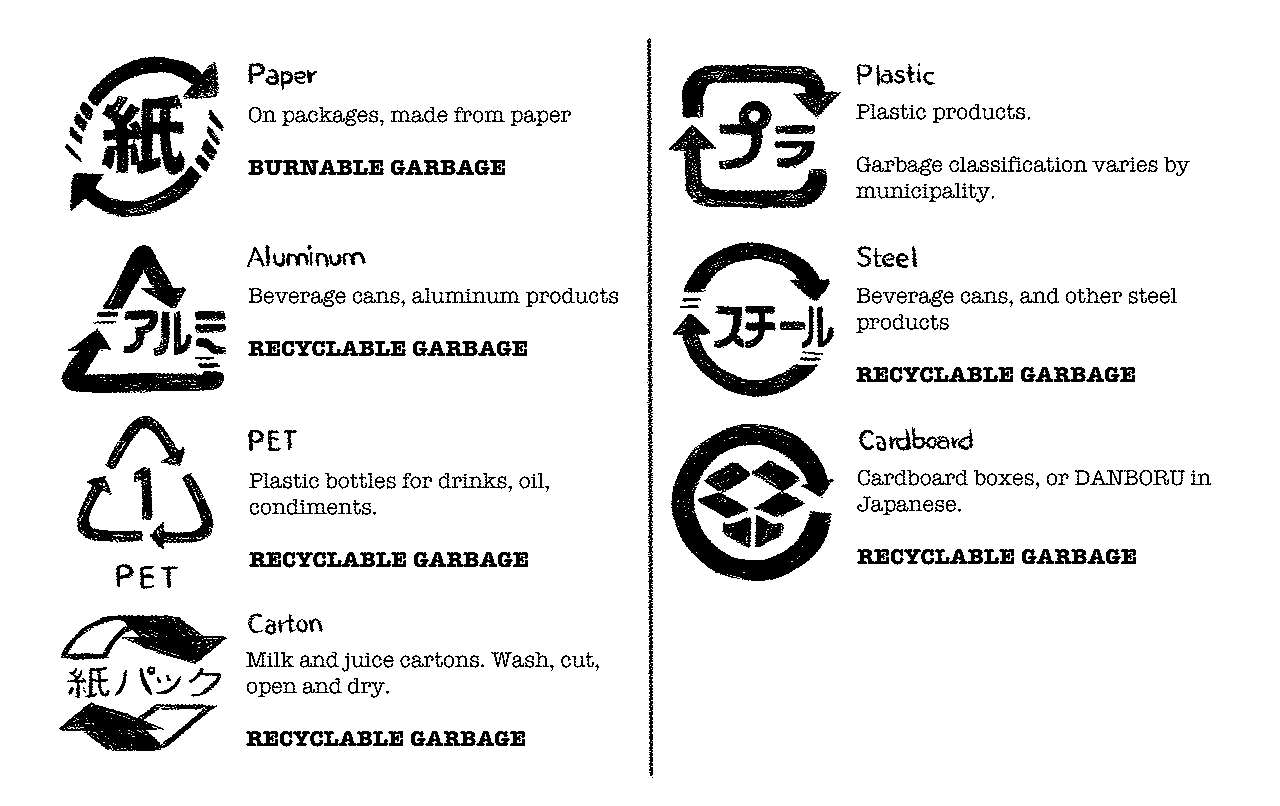
Understanding trash & recycling is a big part of daily life in Japan. Being an island, and a place where lots of packaging is being used, they put extra care in the proper recycling and burning of consumables, landfills are not an option. All refuse and recyclable products are washed, and separated.
| burnable | recylable |
|---|---|
| paper products 紙 | plastic プラ |
| food leftovers | steel スチール |
| clothes | aluminum アルミ |
| shoes | pet bottles |
| carton 紙パック |
As a visitor, you should try to inform yourself as much as you can, try to find a guide that will help you divide everything up properly. Many convenience stores will have bins outside of their store for recyclables, although generally they prefer it to be used for their own products, but if you don't have any other options it's better to leave your pet bottles, cans and plastics here. They'll usually have a bin for burnable trash too, usually labelled as 燃えるゴミ, the Japanese word for garbage is gomi. Only deposit small bags in 燃えるゴミ bins, don't pile bags outside of the bins.
Another way to get rid of garbage, is to get the city's schedule for the disposal of items and to leave them on the street along with the recyclables and/or trash of your neighbours. If you can't find a schedule, just take a peek at what is out on the curb and that should make it clear what you can and can't bring out on that particular day. Although, make sure to take it out on the right day, because every item has its own pickup time and day. If you want to put your trash and recyclables with that of others, do it right, because otherwise the truck will not pick it up and label it with a sticker. By doing it wrong, you'll make it someone else's problem and that isn't nice.
Another obvious option is to pay for moorage at a marina or to visit a sailing club, they'll allow for recycling and trash disposal. While in Shimizu, we went to a marina dock to dispose of our very dead PVC dinghy Iggy, you may want to ask permission when disposing of large items. While in Minamiise in Mie, the boatyard could take metal for recycling.
restaurants
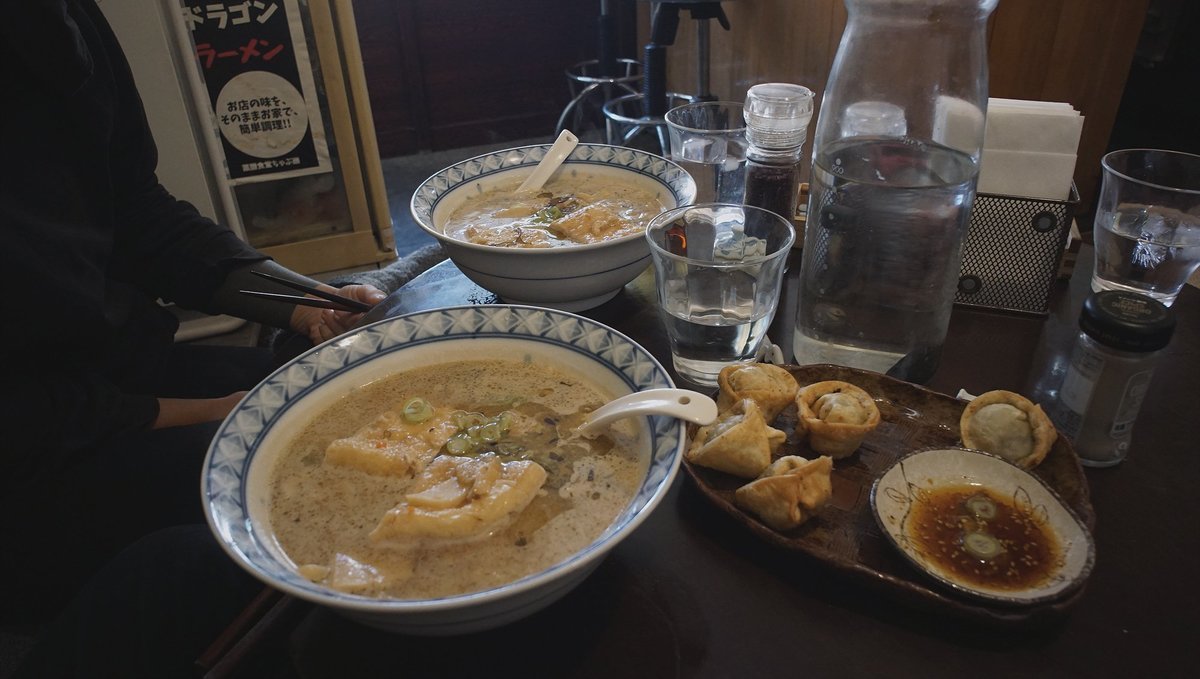
Many restaurants have menus with pictures that you can use if you're not very good with kanji, katakana or hiragana (3 Japanese alphabets). It may be worth learning katakana at least, since it is often used for English terms which are sounded out in Japanese. For example:
- ビール (Biiru) is 'Beer'
- スパゲティ (Supagetti) is 'Spaghetti'.
Restaurants where there are many tourists, will often have an English menu. They will likely offer it to you on arrival if they've got one, otherwise you can ask for it with:
- 英語のメニュはありますか
- Eigo no menyuu wa arimasu ka
- Do you have an English menu?
Eigo is the word for English, and menyuu for menu. If they don't have an English menu, you can always ask them for a recommendation by saying
- おすすめおねがいします
- Osusume onegaishimasu
- Your recommendations please!
If you don't know what to pick on a menu and aren't picky about the food, the word osusume is a magic word, it can help in a bind and you can discover something new by using it! Osusume means "recommendation". If you use this word, you leave it to them to pick something for you, they'll likely serve you a popular item, or a house special. Know that there is no tipping in Japan in restaurants.
Food restrictions
If you have food restrictions, like if you don't eat meat, fish or dairy, refer to our detailed plantbased diet in Japan guide.
If you have allergies, the word is: アレルギ(aregugii). View Live Japan Guide for more information on allergies and reading labels in Japan.
If you've got serious allergies, it is best to print an international allergy card to show restaurants or shop owners.
agents
Agents aren't necessary when cruising in Japan, but if you want one anyway, contact Kirk Patterson through his agency Konpira consulting. He has sailed extensively throughout Japan, and will be able to help you.
Kirk is so famous now that when we visited in 2019, a random Japanese sailor gave us his phone one time with Kirk on the line, completely unprompted. We think the reason the sailor did this was because he thought we would benefit from his expertise (we didn't in the end, but it was nice to talk to him, we had exchanged emails in the past about visa extensions).
electricity
Voltage in Japan is 100V, American and Canadian boats will have no problem in marinas here, we could use our boat cord but had to go through a converter. If you buy electronics here and plan to use them back home, it is necessary to buy a step up/down transformer or you will burn out the unit. We mostly relied on solar to charge our batteries, we only used the AC connection to power a small induction plate.
lpg
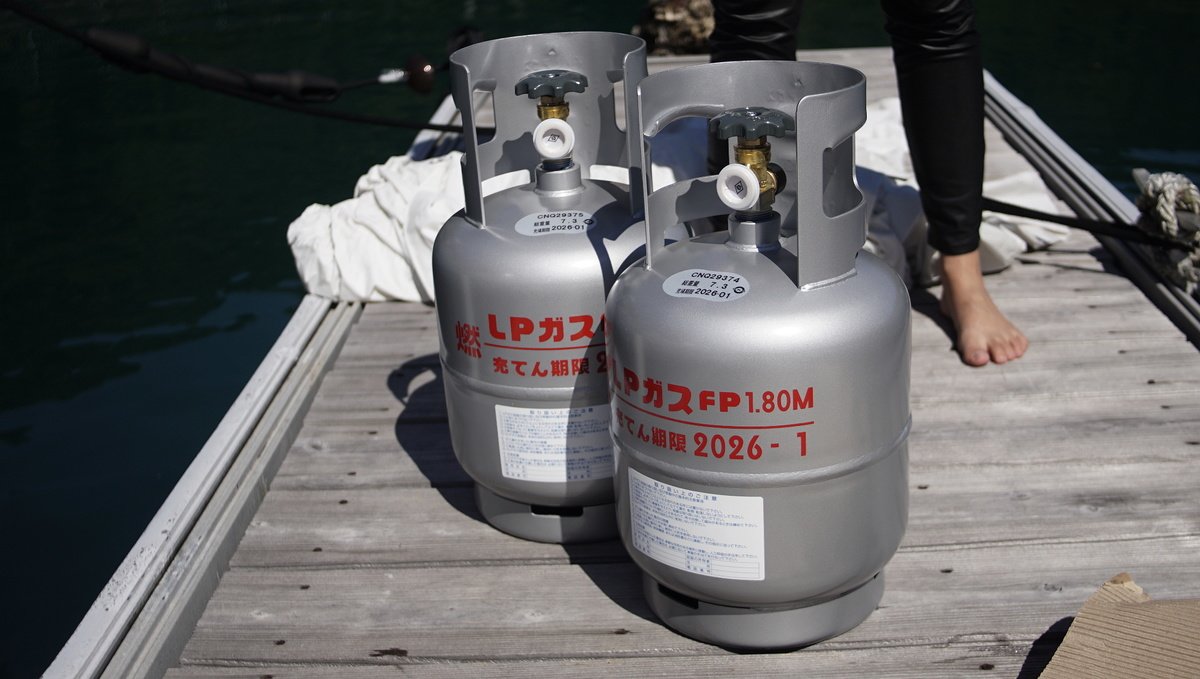
It is difficult to get foreign tanks filled in Japan. While in Shima Yacht Harbour, we had to buy new Japanese-style tanks because they refused to fill ours — may have been because of their aged appearance. The issue with Japanese tanks is that they are tall and skinny, and only get taller as their volume increases. Our propane locker is made for a short and stout 9 kg (20 lbs) tank, we can't fit a Japanese tank of similar volume because of its increased height. This resulted in us purchasing two smaller 5 kg tanks, which isn't ideal, but better than not having the ability to cook food — I think you'll agree. It cost us 35,000 Yen for the two tanks full of propane... plus delivery to marina, plus marina processing fees — not cheap, but we had no choice.
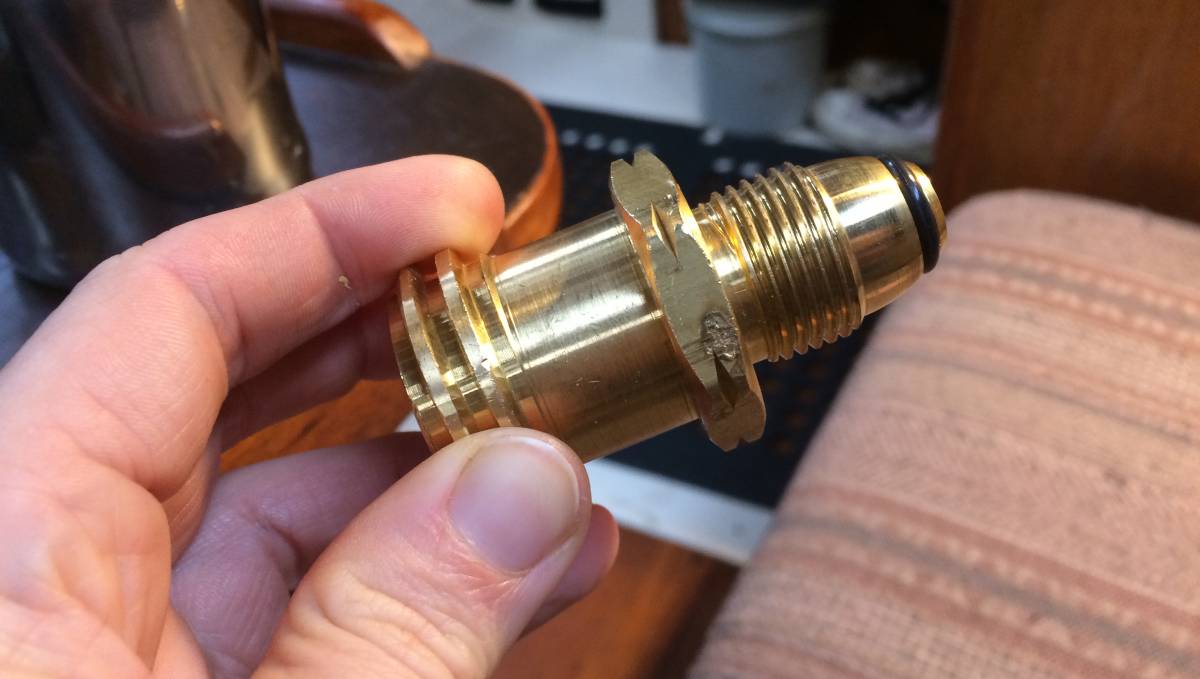
If you buy a Japanese tank, note that they may come with a POL valve. If your LPG setup doesn't allow for this kind of connection, you'll need a male QCC adapter to male POL(see above photo).
We've no experience in other marinas and ports, but we've read that the following ones can help you fill a tank:
- Tannowa Yacht Harbour (Osaka Bay)
- Hagi Port (Yamaguchi)
- Shodo Shima (Kagawa)
Buying a hot-plate that uses propane cassettes is a good backup, and is easy to find anywhere in Japan. While in Japan we also purchased a small Induction cooktop to use while at a dock with usable outlets.
water
The national water infrastructure is reliable and purification facilities are well-maintained. The water in Japan is 'soft', with a low hardness level. Not all ports can supply water, especially small fishing ports, though it is always good to ask.
- Yotto ni wa, mizu arimasu ka?
- Is there water for my yacht?'
They'll likely ask you how much you need, the word for 'litre' is 'Ritta'. So if you need 100L, you can say:
- Hyaku Ritta onegaishimasu
- 100L please
Writing the quantity on paper is also a helpful and stress-free option.
money
ATMs generally allow you to use your credit card to take out money, otherwise post offices (郵便局 yuubinkyoku), recognizable by the large red T logo, also have machines that you can use to get cash.
In populated cities like Tokyo, many convenience stores (コンビニ konbini) often have ATMs inside that you can use (Family Mart, 7eleven). Konbinis are magical stores in Japan, you can ship packages there, you can print/copy documents, buy concert tickets, as a resident you can even pay your bills there.
language
Most Japanese speak little to no English, if you need help, try and find a younger person. Young teens learn English in school and are usually happy to lend a hand. Otherwise, drawing pictures is always fun :). Japanese people are shy at times, but they will get out of their way to help you. Having a dictionary is handy, I highly recommend the iphone app Imiwa for that. It's a big app, but it has everything, and you can also search for kanji with it.
There are 3 alphabets in the Japanese language. As a traveler, you should only focus on the simpler ones: Katakana and Hiragana. Katakana is used to write English words with japanese letters, for example:
- ice cream becomes...
- aisu kuriimu
- アイスクリーム
Katakana will enable you to decipher many letters on a food menu, american movie titles and products in electronic stores (many use English terms). Katakana has 45 letters, you can use the app Duolingo to learn them. Another cool thing, is that with katakana you'll be able to write your own name in japanese, for instance, mine is: レークベール(re-ku be-ru). In Japanese, 'L's become 'R's, it butchers English names a little but it is still very fun. A celebrity name like Nicole Kiddman becomes ニコルキドマン (Nikoru Kidoman).
Hiragana is the next step, if you want to learn even more. Hiragana is used to write verb conjugations and for particles, if you pick up a children's book you'll also notice that it will be written using hiragana alone. If you know hiragana, you'll be able to read many things!
Kanji is more of a challenge, but learning a few is always fun and helpful. For this step, you can go through the varying levels of the JLPT (Japanese language proficiency test). This is for those who are really into languages. The app I mentioned before, Imiwa, has all of the JLPT levels for study.
internet
The best way to get internet in Japan is to rent a pocket wifi. There are currently more than 30 companies that provide wifi router rental in Japan, with big variations in data allowances, connectivity speeds, coverage and rental periods. Routers use 3G, 4G, WiMAX or LTE and tend to come in 3-, 7-, 14- and 30-day (or longer) packages. Softbank offers many pocket wifi options for rent for light and heavy use. It gets cheaper the long you rent it for or if you pay for time up front. It is possible to receive the unit by mail, for more information, check out Kyushu Wifi Rentals. Kyushu Wifi Rentals is one of many options, we are not saying that it is the best, it is one that we used and that was the most convenient at the time.
For light use, the Ninja Wifi router is the best deal at about JPY 972 per day. We got the Softbank Pocket WiFi 501HW model, which offers unlimited data and costs JPY 29,160 for a 4-6 months rental. We rented this unit in 2019, and again in 2020. Evidently, deals and models change overtime, there may be better units available now.
currents
An important factor in route planning is current, the circulation of currents here is complex and can be quite strong. The Japanese Coast Guard provides useful information on the location and strength of current throughout Japan on their website:
Quick Bulletin of Ocean Conditions.
The Kuroshio is a high-temperature, high-salinity warm current that is dark blue color as is implied by its name and has a transparency of more than 30 metres. Its flow rate is 2 to 3 kn on the average and reaches up to 4 to 5 kn, and its watercourse changes more violently in direction than is usually anticipated. The Kuroshio is weaker in summer and autumn and stronger in winter and spring.
It is always important to pay attention to the movement of the current as it has a great influence on navigation.
navigation
A good app for navigating in Japanese waters is New Pec Smart. It is maintained and updated with the latest changes in fish and oyster farms locations as well as other navigational hazards. It can only be obtained from the Japanese iOS store, it is only available in Japanese and requires a monthly payment of JPY 3,800 — ouch! Though it is a good app, may be worth it if used for a short time.
Small craft guides (or S-guides, small books with chartlets) are no longer sold as hard copies, but the maps are available for purchase as a download here.
Sailing directions volume I[PDF, 4.41 MB, 186 pages] & volume II[PDF, 10.1 MB, 228 pages] is useful. The last two are no longer published and are available online, but you can also purchase newer physical versions of these elsewhere online if you search for: Sailing Directions Japan 158 Volume I & Sailing Directions Japan 159 Volume II.
VHF Channel 16 is mainly a shipping communications channel and should only be used in an emergency.
fishing nets
Japan is a fishing nation, every single bay or inlet is occupied by some kind of boat harbour, fish pen, algae or oyster farm. This means that you need to be especially careful when sailing near the coast, some nets can extend far from the shore. The nets are often marked with poles but are not always charted — at least, not on Navionics (some of the more permanent fish havens are).
Getting caught, and causing damage to a fishing net, can be a costly affair — avoid it. They will fine you very large sums(we heard stories about it).
For nets near and around Shima (Mie prefecture) you can check this website. Otherwise, this website lists a few navigational warnings for mariners, updated often.
heavy traffic
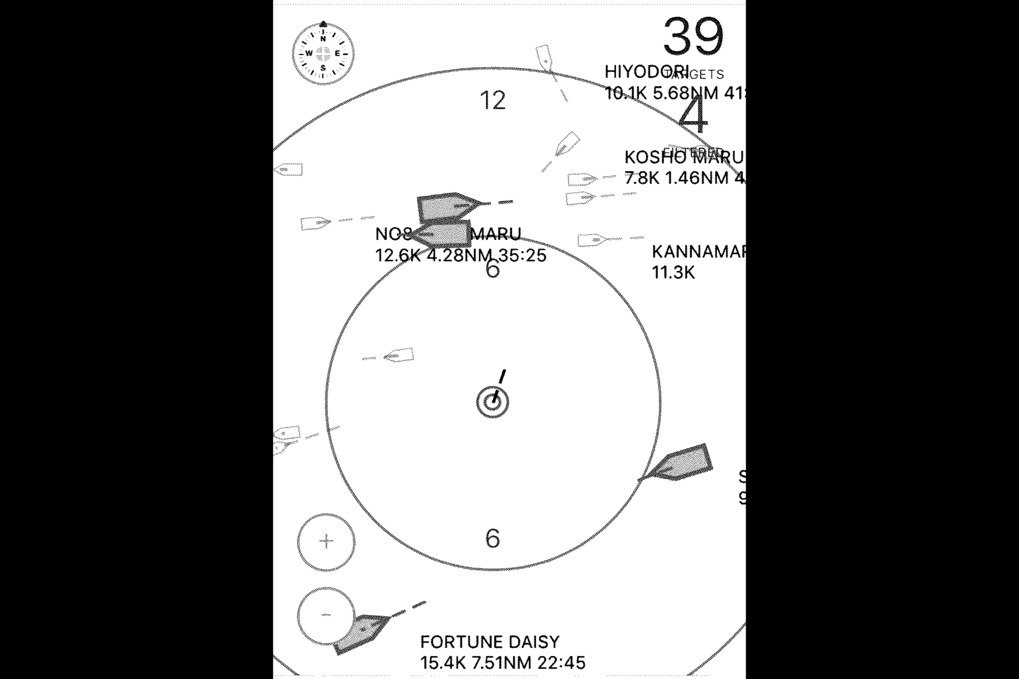
There are many dangers when sailing in Japanese waters, one of them is the heavy traffic thundering up and down the coast. Sailing during the day is recommended here, but there are times when the distance is too great and that is simply not possible. In that case, having AIS is a definite advantage.
North of the Kii peninsula (east coast) there is a lot of traffic and you can find yourself sandwiched between large boats, having AIS makes their intentions — as well as yours — clear. We highly recommend getting it to sail around in Japanese waters.
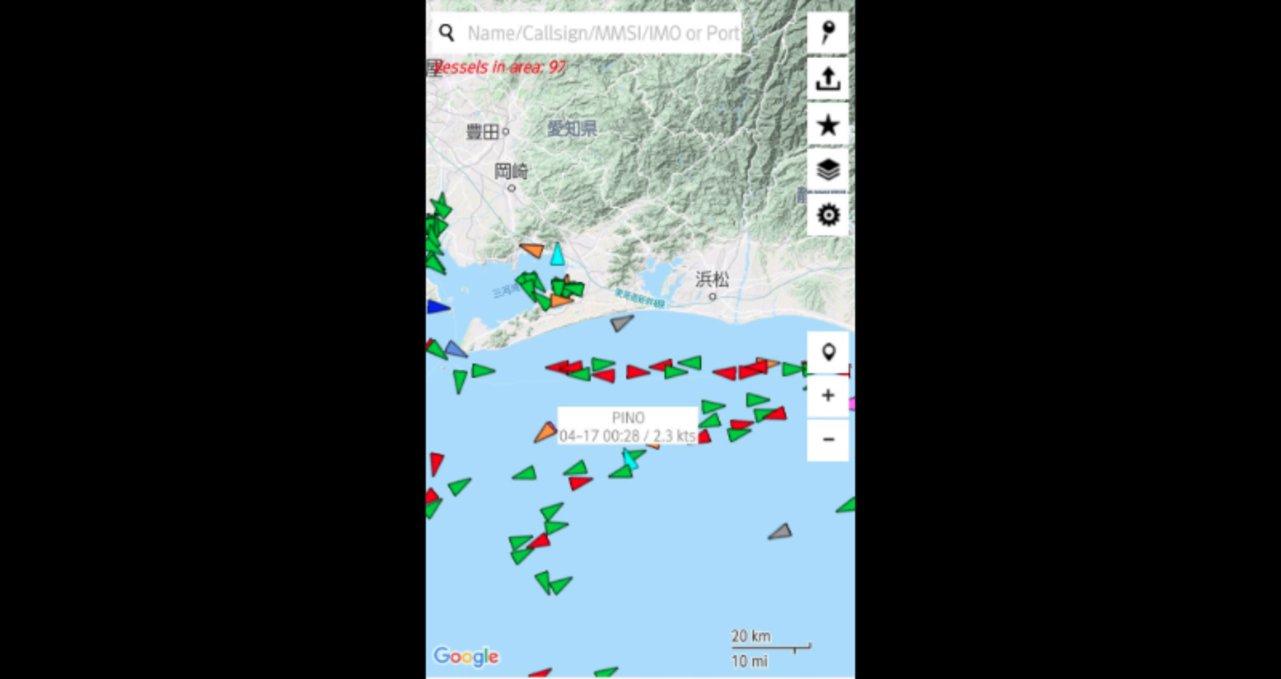
weather
The sea areas along the coast of Japan are subject to great changes in sea & weather conditions, and can become a threat to navigation. Amongst these threats there is fog, gales & currents. It is good to inform yourself as much as you can before setting sail. This document[63.1 MB PDF, 120 pages] outlines the various things to consider when sailing in Japan, regarding weather and traffic.
The best time to sail to Japan from the South Pacific is mid-March to late April, when the winter trades have lessened and before the onset of typhoon season — although there can be typhoons at any moment in the year in this area. In Winter and Spring, north to westerly winds predominate along this indented coastline. In the period between Winter and Spring, the winds blow extra hard — almost as if the Winter is blowing itself out — but as Spring evolves into early Summer, low pressure areas that start to pass through every three or four days bring periods of calm, rain, increasing warmth and easterly winds. (Thank you to SY bosun bird for this description).
We use saildocs to receive weather forecasts, from the Japanese Meteorological Agency.
Good resources for weather are wamwam.co.jp and GVP. Both are entirely in Japanese. If you throw them into a translator it should be easy to read. The subscription for wamwam costs JPY 30,000 per year and is very thorough, you can find a sample of what you'll get here.
tides
Tidal heights in most of Japan are not necessarily extreme, but can reach more than two metres in some areas in the spring. However, there are strong tidal currents and other more established currents which affect navigation considerably.
chandleries
Unlike elsewhere, there aren't always chandleries near the marinas. Buying gear online is easy and cheap and there are many different sites to choose from:
These sites were recommended to us by local Japanese sailors. You can throw these websites in google translate, or get the help of a Japanese friend to order parts.
The online store we used the most was Yuukou Marine, otherwise we ordered parts through the marine catalogue available at some marinas(they'll likely be able to order parts if the marina has an adjacent boatyard).
moorage options
Marinas
There are many great marinas in Japan, all equipped with modern facilities, but the ones near bigger cities (Osaka, Tokyo etc) charge more. You can find a list of marinas — as well as 'mini marinas'(run by local governments and fishing co-ops) — on the website UMI EKI (sea station).
Anchoring
There aren't many bays where one can anchor, they do exist, but they are few and far apart. Many japanese sailors never anchor, they only do in emergencies or when med-mooring. Although some cruising boats have reported that finding anchorages was simple with a good internet connection, and using charts and google maps to spot newly constructed structures (bridges) or fish farms.
Fishing harbours walls
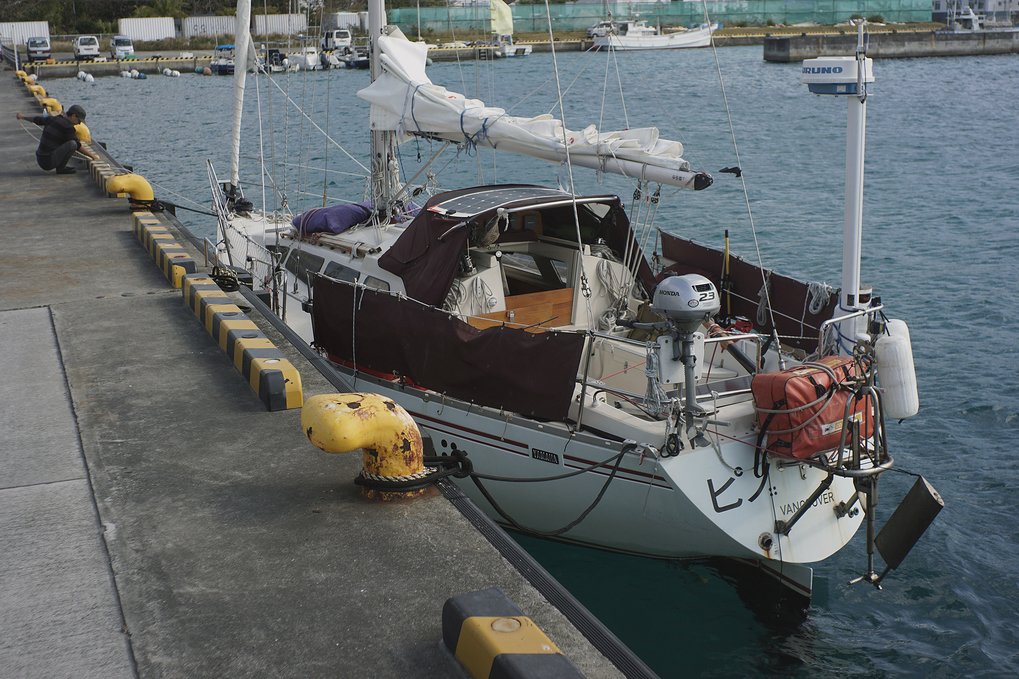
You can moor into most fishing harbours in Japan. All are relatively sheltered, within concrete breakwaters. Some ports will charge nothing, others very little, even for extended stays.
Fishing harbours require you to moor onto a concrete wall. If planning to moor in a place like this, it is best to arrive at high tide. When coming alongside at low tide, getting onto the pier may be difficult, not just this, the wall will be encrusted in barnacles and in big winds it may be difficult to moor without damaging your yacht (even with big fenders on).
Using a sturdy fenderboard, with big fenders underneath, is necessary. You will have to adjust your lines with the tide, keep a close eye on the height of it to avoid bad surprises. (Sometimes the tide is so high the fenderboard or fenders pop up onto the dock.)

Harbor pontoons
In some ports, you'll be able to dock onto a small pontoon. The places reserved for visitors will be marked by yellow and black stripes. If there is no more room, find any place you can and ask if it's okay to stay there, otherwise, it may be necessary to tie to another boat; although, again, it's better to ask because not all boats will appreciate you rafting to their yacht.
These will usually cost more than tying to a wall, they often belong to fishing/yacht clubs or hotels, but have the advantage of rising and falling with the tide.
affordable marinas
There aren't many affordable marinas in Japan, many are expensive, and don't have cheaper monthly fees. In fact, many marinas start charging more the longer you stay. Others only permit foreigners to stay for 7 days per month. So where are good places to stay for longer than a week, and for cheap?
Shima Yacht Harbour
- 34°20.148N; 136°41.123E
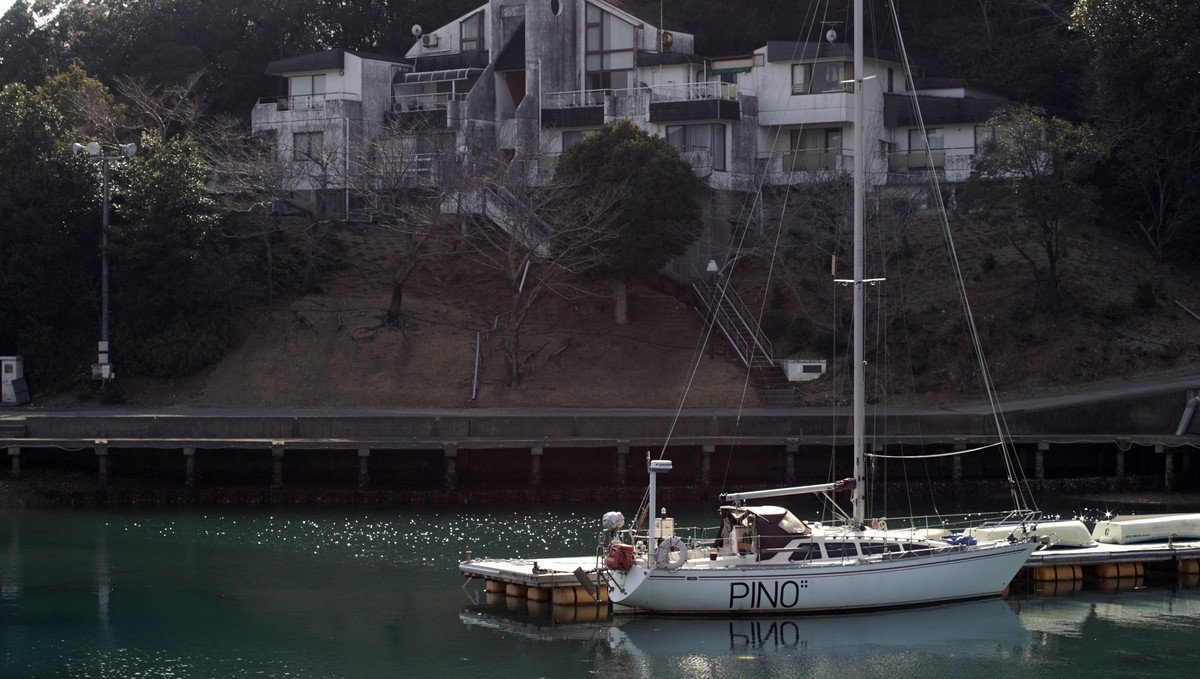
Water, power, showers & laundry (coin laundry) available. Harbour Master Mr. Oka is very kind, but speaks little to no English. Hiro & Kako are local sailors, Mr. Oka may introduce you to them if they are in town. They are a couple that cruises around the world, and currently keep their boat in France, although they come back to Japan often.
The town of Gokasho is a 30 min walk, the supermarket Gyuutora is closer. Next to the supermarket is a DIY store called Komeri. ATMs are available at the post office or bank in town. Haulout possible, the marina can help with a variety of projects if needed, there are many workers on site. The marina has a catalogue of parts, and can order stuff for you if needed.
Odo marina
- 33°35.463'N 130°18.704'E
Water available, WiFi and coin-op showers. 15-20 minute walk to the nearest supermarket.
Tannowa Yacht Harbor
- 34°20.2'N 135°11'E
Tannowa is popular with cruisers, as a safe spot to leave your yacht for a long time. The owner offers a reduced monthly fee for visitors. The dock has power and water. Tannowa is not too far from Osaka, and from Kansai airport. Email Takeda Masayuki at tannowa.yh@nifty.com for info.
Yonabaru Marina
- 26°12.251'N 127°46.258'E
A marina in Okinawa that was recommended by our friends from SY Muktuk. This is their write-up of their time at Yonabaru:
The harbor master is a fatherly and very kind man who speaks good English. The marina is brand new, operating for two years. Water, power and the two bicycles are for free. A boat yard with two traveler lifts, one for up to 20 t and the other up to 60 t and the rates for hauling out are apparently cheap. Just across the street you can find a small shopping center with a supermarket, a hardware store, a book shop, a 100Yen shop and 2-3 other shops for shoes and clothes. 10 minutes away near the park is a farmers market, a supermarket mainly for fruits and vegetables. The Shuri Castle, from the old kingdom of Ryukyu, is also a good distance to reach by bicycle and several buses go to Naha City, around 30-40 minutes.
Yokohama Civic Yacht Harbor
- 35°24.606'N 139°37.799'E
A yacht club that provides 30 free days for foreign boats that are visiting. Water, diesel and electricity. Shower, toilet and laundry available. Close to downtown Yokohama and a short train ride away from Tokyo.
Fishing ports
Many small fishing ports will charge a small fee for docking, and some will charge nothing at all, it really depends on the location. If adjoined to a resort or onsen, chances are they will charge something.
Boatyards
If you need to haul your boat out, here is a list of good boatyards.
Shima Yacht Harbor
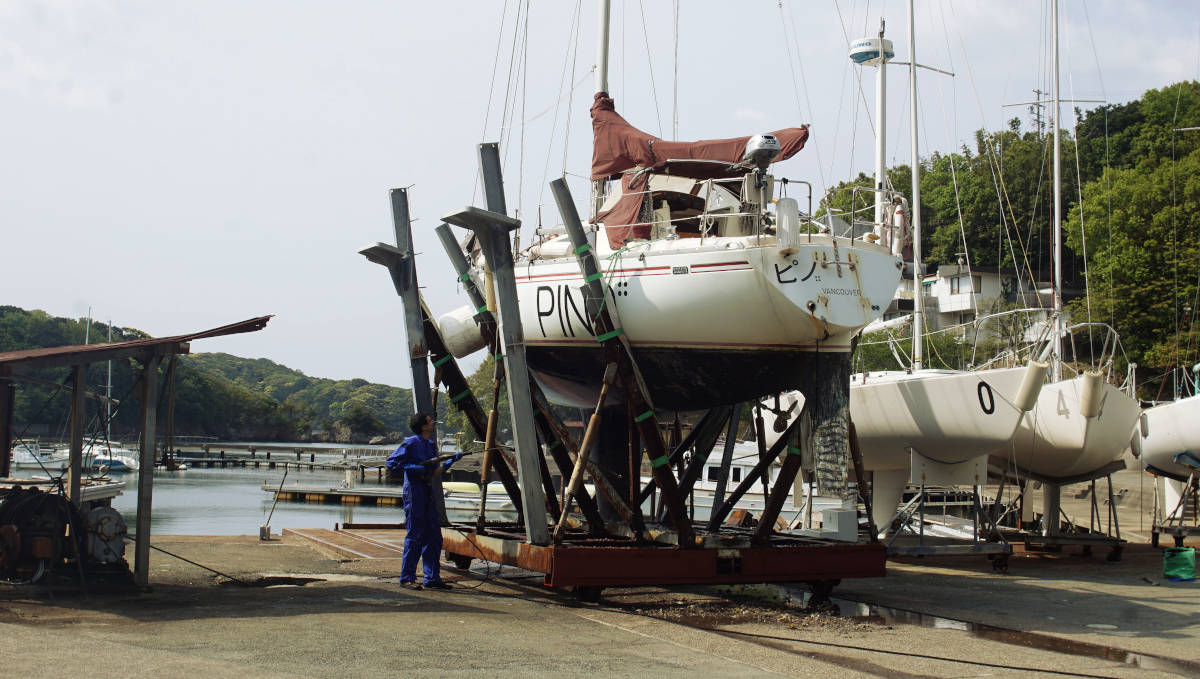
The Harbourmaster in 2020 was Mr. Oka (shima-yacht-harbor@vocshima.jp), a very kind, and generous person. Home to the VOC (vivre ocean club). This boatyard is small, and they can't accommodate many boats at once, although work is happening at the moment (2020) to make it larger. It costs about 8,000 Yen/day (10 m yacht) to be on the hard. The boats are hauled out via a trailer on rails, starting from the water. The marina workers will want to drive your boat to the cradle, as it is dangerous to be on it as it is lifted out. You can buy bottom paint from them directly. DIY store called Komeri a 30-minute walk away, they sell sealants, paint, brushes etc
Fujisan Hagoromo Marina (Shimizu)
A marina in Shimizu that we stayed at. We saw the boatyard, a space alongside the marina with boats on hardstand. We don't know the cost of doing a haul out here, but there's room to accommodate many boats. Coin laundry nearby, with big industrial-sized washing machines, perfect to wash sleeping bags or other bulky items. Many supermarkets, there's also good DIY store at the Bay Dream mall, they stock paint, tools etc.
Kaze No Ko (Hiroshima)
- 34°07.2'N 132°28.2'E
Owned by Hideto Komura (kazenoko@sf6.so-net.ne.jp). Speaks good English, and they've got a good price. They can help to order parts, if necessary. Accommodates boats who draw a lot. For more info, check out SV Dagon's post here.
Odo marina (Fukuoka)
- 33°35.5'N 130°18.7'E
Marina manager is Sugawara San. Marina has a travel lift, close to supermarket, hardware store, chandlery, coin laundry etc.
travel by land
There are many passes you can get to travel by land, many that fit different budgets. The main ones are:
The railway in Japan is internationally known for its 20'000km length servicing the whole country, its punctuality and speed. You need to buy the Rail Pass before entering the country. You can choose a first class (green) pass that is more expensive, but the seats are more spacious, otherwise there is the ordinary pass. Pricing for the ordinary pass is as follows: for 7 days (JPY 29,110), 14 days (JPY 46,390) and 21 days (JPY 59,350). It works on JR trains, the Tokyo Monorail, some non JR lines as well as local JR buses. For more info, check out this website.
This is useful for the Osaka region. A three day pass is JPY 5,000 for adults, half price for children for three days unlimited travel on everything but JR trains, which in Kansai is not a problem, and almost all buses and subways. At JPY 1,660 per day for an adult, even a trip to Osaka and back with a couple of subway rides is cheaper on the pass, plus it means you don't have to stand in line and buy tickets. A day on the pass is a calendar day, not 24 hours and the days don't have to be consecutive (the pass is valid for about 6 weeks). It can be used on buses and subways as well as the trains. The Kansai pass is available from the Information Center at the Osaka Namba station
The Japan Bus Pass by Willer Express can be used on overnight and daytime long distance buses on the network of Willer Express on three (JPY 10,000), five (JPY 12,500) or seven days (JPY 15,000) of your choice within two months from purchase. It is longer than traveling by train, but for budget-conscious people it is a very good option. It can be purchased online here.
participate in a sailing rally
A rally is a great way to meet Japanese sailors, and to see some new places in good company. The Setouchi International Yacht Rally is a good option. It has been held in the Seto Inland Sea of Japan since 2013, and usually takes place in the spring. The Rally usually lasts about two weeks, and costs about JPY 55,000 (for one person, and the boat. Otherwise it's another JPY 35,000 per person).
Leaving Japan by yacht
Prior to departing Japan, a yacht must report estimated time of departure to the Coast Guard at the last port from which the yacht will depart and submit a ‘Notification of Departure’ form as per instruction by a Coast Guard officer. The captain and all crew members need their passports stamped with an exit stamp at the port of departure. Prior to departing from Japan, it is necessary that the status of the yacht be changed back to 'Special Ship' by notifying the status change to the concerned customs office.
leaving japan by boat
You will need to exit via a port of entry. If you have a Naikosen, you will need to cancel it with Customs (returning the boat to “foreign” status) before leaving Japan. Once it has been cancelled, you can fill up with tax-free fuel. Then you'll have to visit the prefecture's Immigration center. They will ask you to leave within 24 hours, and if that changes, because of weather or a breakage, go back to the Immigration office straight away to notify them.
Keep in mind that not all customs offices operate on a regular schedule, for instance, the Shimoda customs branch is only ever open on Wednesdays. When you've decided on your departure date, find out where the nearest customs office is and make sure it will be open.